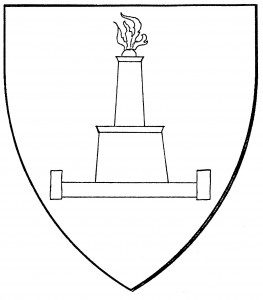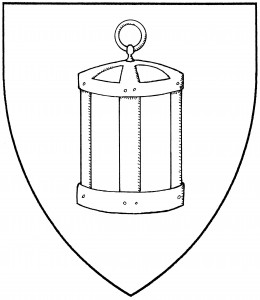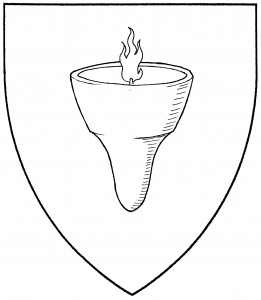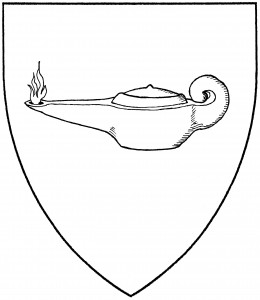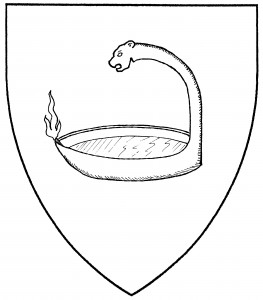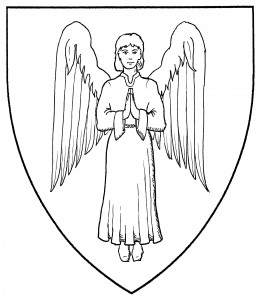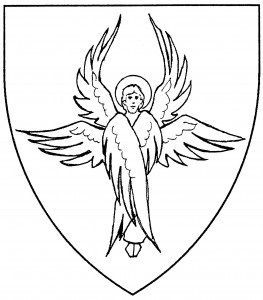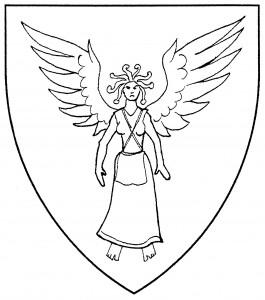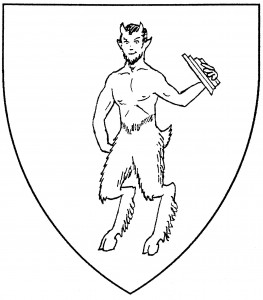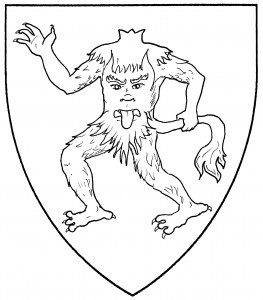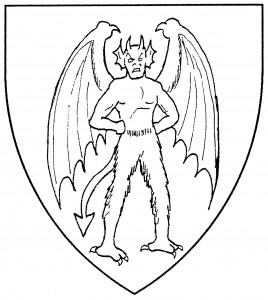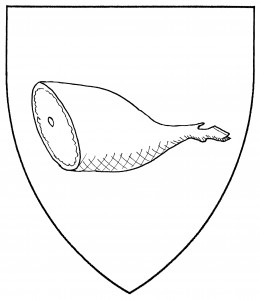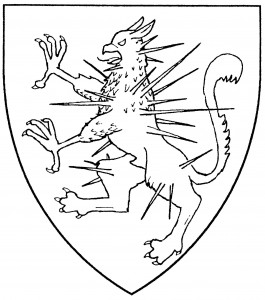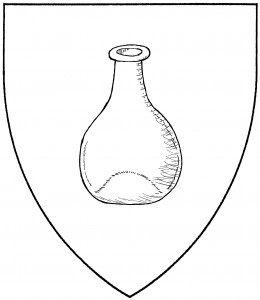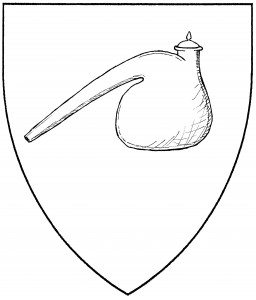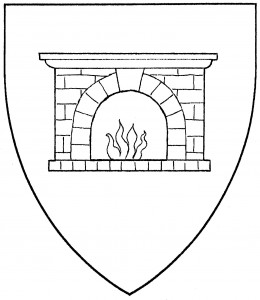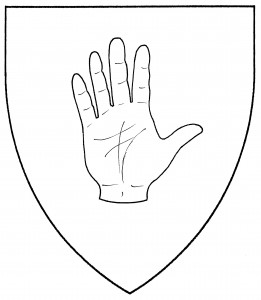
Hand (Period)
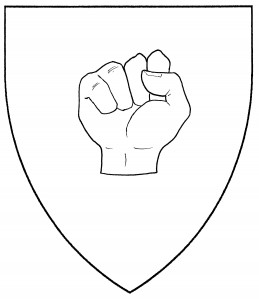
Fist (Period)
A hand is a human appendage used for grasping and holding; it is found in the canting arms (French main) of Malmains, c.1275 [ANA2 469]. The default hand is the dexter hand, the default posture is apaumy and couped. Sinister hands are very frequently found in period armory, as well. While Society armory grants no difference between left and right hands, current practice is to explicitly blazon the handedness.
The hand is unclothed by default; sometimes it is found issuant from a cuff, which fact is blazoned. In period blazon, a “hand proper” was assumed to be Caucasian (pink or white) unless otherwise specified; Society blazon had once followed this, but is now more inclusive. Hands proper now follow the same Society blazon conventions as full humans proper, as described under human figure.
Hands are found in other postures besides apaumy. The hand may be “clenched”, forming a fist; indeed, this form may be simply blazoned a “fist”, as in the canting arms (German Faust) of Fausten, 1605 [Siebmacher 211]. A variant of this form is a fist with the index finger extended, as in the arms of Angiolini, c.1550 [BSB Cod.Icon 278:273].
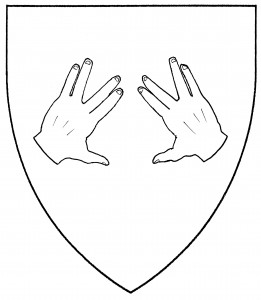
Pair of hands in birkat kohanim (Period)
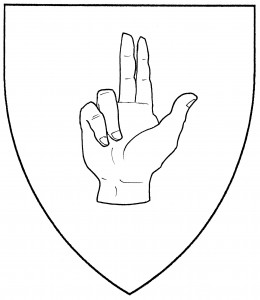
Hand of benediction (Period)
A pair of hands “in birkat kohanim” has the hands slightly tilted towards each other, the fingers spread but with the index and middle fingers together, as well as the ring and little fingers. This hand gesture is used as a Jewish blessing. The motif is found in period armory, in the arms of Rabbi Abraham Menachem Rapoport, d.1596 [Nathan Ausubel, Pictorial History of the Jewish People].
Similarly, a “hand of benediction” is a gesture used in Christian blessing: the hand is apaumy, with the thumb and two fingers upright, the other fingers curled into the palm. It’s quite frequent in books of hours, and is depicted in modern heraldry texts [Guide 131], but makes very few appearances in period armory: e.g., the crest of Boyd, 1582 [Dunvegan Armorial, fo.253], or the attributed arms of Prester John, c.1530 [BSB Cod.Icon 391:55]. A vested arm ending in a hand of benediction is found in the episcopal arms of Sechau or Seckaw, 1605 [Siebmacher 12].

Hand of Fatima (Disallowed); hand of glory (Disallowed)
The “hand of Fatima” (hamsa) is a stylization from North Africa and the Middle East. Though we have examples of the motif dating from the 12th Century, there was wide variation in its depiction. Most particularly, the modern depiction of the hand of Fatima, symmetrical and with two “thumbs” curving outward, has no period support as of this writing, and is no longer registerable. A hand drawn as a period hamsa is still permitted, if identifiable as a hand; the style of depiction is left unblazoned.
The “hand aversant” is the opposite of the hand apaumy, with the back of the hand to the viewer. Peculiar to the Society is the “hand of glory”, a hand enflamed, which is no longer permitted in Society heraldry.
In British heraldry, a sinister hand apaumy gules is used as the augmentation for baronets; and the “hand of Ulster”, a dexter hand apaumy gules, is a reserved charge in Irish heraldry. For these reasons, Society armory disallows the use of red hands apaumy on white backgrounds, when they appear to be in the form of an augmentation.
For related charges, see arm, foi, gauntlet. See also glove-puppet.
Mia Sperling bears: Sable, a hand ermine.
Molly Gill Brae bears: Argent, a hand fesswise vert.
Chrystofer Larchmont bears: Gyronny vert and Or, a dexter fist erased gules.
Iaenbryht Græghar bears: Per pale gules and vert, in chief a hand in benediction argent.
Hadrardus Blach bears: Gules, on a bend argent a sinister fist and a dexter fist both fesswise with index fingers extended sable, in chief a compass rose bendwise argent.
Sulima ibn Jafar bears: Azure, a hand of Fatima couped between three goblets argent.
Jethro Stille bears as a badge: Per fess azure and Or, two hands in birkat kohanim and a double-headed eagle counterchanged.
